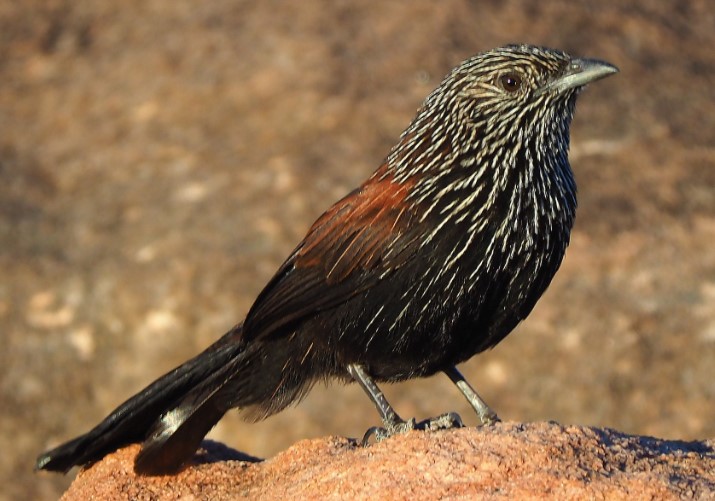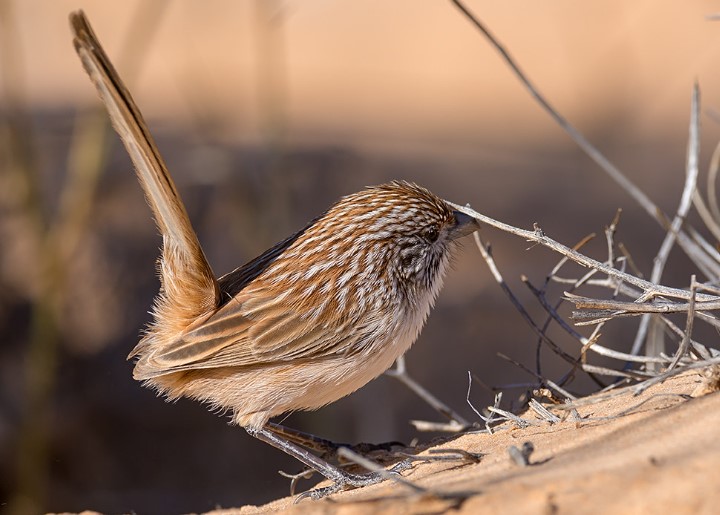The Black Grasswren (Amytornis housei) could have been a lost species as well. However, the Black Grasswren was only recently rediscovered because of its remote, impenetrable habitat. A species of bird in the Maluridae family, the black grasswren is endemic to Western Australia. The Wunambal people call it dalal. It prefers tumbled sandstone outcrops, ravines, and blocks covered with spinifex, Triodia, and Plectrachne in the western Kimberley, where trees are sparse.
The black grasswren also has thick-set feathers and a broad bushy tail that does not quite cock much. Their scurrying over rocks and along crevices makes them look like rats. Foraging in small groups of up to eight grass wrens outside of the breeding season, these sedentary birds find well-shaded cover from overhangs and shrubs throughout their home ranges each day under well-shaded cover.
A few meters apart from one another, they hop, flutter, and glide with jerky alertness, poking their noses into litter and crevices as they go. Food is consumed both in the form of insects and seeds. Birds jump on rocks and bash hard-shelled insects against them until they are managed, pause briefly to look around, and then jump back off the rock.
Males seem to hold the group together all the time, as their tails twitch up and down periodically. Leading, initiating call-and-answer contact calls, and bounding to the top of rocks to check for disturbances, tails twitching, they move ahead. Males continue to gather the group after it has dispersed, flirting with their tails in every direction as they snatch songs from projecting rocks as the group runs headlong from rock crevice to rock crevice.
Black grasswrens are about 180–210 mm long. The head and back of the male are black with fine white streaks; the rump and upper tail are chestnuts in color. There is a dusky black color on the wings and a bushy tail. Underparts are black; throat and breast are streaked white; brows are absent. The eyes are brown in color. Black-grey is the color of the bill. The feet are gray-black in color.
Female birds have orange-rufous lower breasts and undertails. There is white on the chin and the edge of the eye. Feet and bills are paler. Immature birds are uniformly dusky, with faint whitish streaks over the head and breast. In contact, sharp chirps and purrs are heard; in alarm, loud ticking and staccato tsrrrk are heard.
The song of the Black Grasswren consists of short chattering metallic trills, followed by brief up-swirling whistles. Nesting and breeding take place between December and March. Using spinifex leaves and flower stalks, the bird made a bulky dome nest. Built into the top of a spinifex tussock, the nest is lined with softer grass. In western Kimberley, WA, the Black Grasswren is found on tumbled sandstone outcrops north of the Mitchell River and south of the Yam pi Peninsula.
Read More: The Small Australian Fernwren







